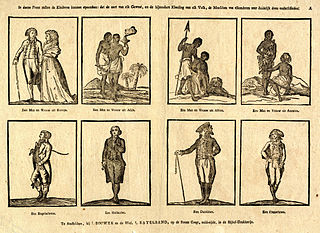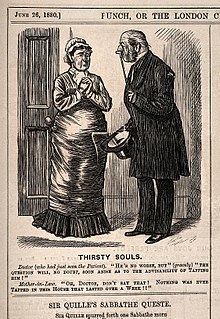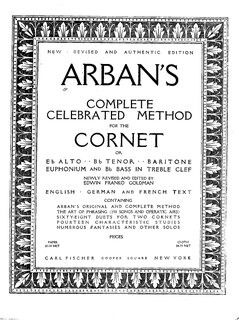 W
WIn social psychology, a stereotype is an over-generalized belief about a particular category of people. It is an expectation that people might have about every person of a particular group. The type of expectation can vary; it can be, for example, an expectation about the group's personality, preferences, appearance or ability. Stereotypes are sometimes overgeneralized, inaccurate, and resistant to new information, but can sometimes be accurate.
 W
WWhen anthropomorphising an animal there are traits which commonly tend to be associated with particular animal species. Some of these are exaggerations of real aspects or behaviours of the creature in question, while other times the stereotype is taken from mythology and replaces any observation-based judgment of that animal's behavior. Once they have entered the culture as widely recognized stereotypes of animals, they tend to be used both in conversation and media as a kind of shorthand for expressing particular qualities.
 W
WBeatnik was a media stereotype prevalent throughout the late 1940s, 1950s to mid-1960s that displayed the more superficial aspects of the Beat Generation literary movement of the late 1940s and early to mid 1950s. Elements of the beatnik trope included pseudo-intellectualism, drug use, and a cartoonish depiction of real-life people along with the spiritual quest of Jack Kerouac's autobiographical fiction.
 W
WBoy racer is a term given to a young person who drives in a fast and aggressive manner; it has become a broader term for participants in modern custom car culture who tune and modify cars with street racing-style aftermarket cosmetic and performance parts such as body kits, audio systems and exhausts. The culture encompasses a broad range of car types including sport compacts and economy cars typical of the import scene, this is in contrast with the hot rod culture of previous generations. Some car enthusiasts and modifiers feel the term labels them as deviant and anti-social and are keen to distance themselves from the term. Boy racer is a term mostly but not exclusively associated with the UK, in Australia and New Zealand hoon is sometimes preferred. In the US, "Rice boy" or "Ricer" is a derogatory term for the driver or builder of an imported hot rod, or someone who modifies their car in a cheap way to imitate the look of a higher performance vehicle.
 W
WA busybody, do-gooder, meddler, or marplot is someone who meddles in the affairs of others.
 W
WA convention is a set of agreed, stipulated, or generally accepted standards, norms, social norms, or criteria, often taking the form of a custom.
 W
WEccentricity is an unusual or odd behavior on the part of an individual. This behavior would typically be perceived as unusual or unnecessary, without being demonstrably maladaptive. Eccentricity is contrasted with normal behavior, the nearly universal means by which individuals in society solve given problems and pursue certain priorities in everyday life. People who consistently display benignly eccentric behavior are labeled as "eccentrics."
 W
WEvil, in a general sense, is defined by what it is not—the opposite or absence of good. It can be an extremely broad concept, although in everyday usage it is often more narrowly used to talk about profound wickedness. It is generally seen as taking multiple possible forms, such as the form of personal moral evil commonly associated with the word, or impersonal natural evil, and in religious thought, the form of the demonic or supernatural/eternal. While some religions, world views, and philosophies focus on "good versus evil", others deny evil's existence and usefulness in describing people.
 W
WThe word geek is a slang term originally used to describe eccentric or non-mainstream people; in current use, the word typically connotes an expert or enthusiast obsessed with a hobby or intellectual pursuit, with a general pejorative meaning of a "peculiar person, especially one who is perceived to be overly intellectual, unfashionable, boring, or socially awkward".
 W
WGoth is a subculture that began in the United Kingdom during the early 1980s. It was developed by fans of gothic rock, an offshoot of the post-punk music genre. The name goth was derived directly from the genre. Notable post-punk artists who presaged the gothic rock genre and helped develop and shape the subculture include Siouxsie and the Banshees, Bauhaus, the Cure, and Joy Division.
 W
WHipster or hepcat, as used in the 1940s, referred to aficionados of jazz, in particular bebop, which became popular in the early 1940s. The hipster adopted the lifestyle of the jazz musician, including some or all of the following: dress, slang, use of marijuana and other drugs, relaxed attitude, sarcastic humble or, self-imposed poverty, and relaxed sexual mores.
 W
WAn intellectual is a person who engages in critical thinking, research, and reflection about the reality of society, who may also propose solutions for the normative problems of society, and thus gains authority as a public intellectual.
 W
WIn psychoanalytic literature, a Madonna-whore complex is the inability to maintain sexual arousal within a committed, loving relationship. First identified by Sigmund Freud, under the rubric of psychic impotence, this psychological complex is said to develop in men who see women as either saintly Madonnas or debased prostitutes. Men with this complex desire a sexual partner who has been degraded while they cannot desire the respected partner. Freud wrote: "Where such men love they have no desire and where they desire they cannot love." Clinical psychologist Uwe Hartmann, writing in 2009, stated that the complex "is still highly prevalent in today's patients".
 W
WMetrosexual is a portmanteau of metropolitan and heterosexual, coined in 1994 describing a man who is especially meticulous about his grooming and appearance, typically spending a significant amount of time and money on shopping as part of this.
 W
WMitică is a fictional character who appears in several sketch stories by Romanian writer Ion Luca Caragiale. The character's name is a common hypocoristic form of Dumitru or Dimitrie. He is one of the best-known figures in Caragiale's 1901 collection Momente şi schiţe, as well as in Romanian humor at large. Mitică is a male resident of Bucharest whose background and status are not always clear, generally seen as an allegory of the average Bucharester or through extension, inhabitants of Romania's southern regions—Wallachia and Muntenia. According to accounts, he was based on a resident of Sinaia, whom Caragiale had befriended.
 W
WHumour and jokes about one's mother-in-law are a mainstay of comedy. The humour is based on the premise that the average mother-in-law often considers her son-in-law to be unsuitable for her daughter, and usually includes the stereotype that mothers-in-law are generally overbearing, obnoxious, or unattractive. This has commonly been referred to as the "battle."
 W
WA stereotype is a widely held and fixed notion of a specific type of person and is often oversimplified and can be offensive. Stereotypes of people and groups are harmful, especially when they lack factual information. Nursing as a profession has been stereotyped throughout history. The stereotypes given to nursing as well as women in nursing has been well documented. A common misconception is that all nurses are female; this misconception has led to the emergence of another stereotype that male nurses as effeminate. These generalized perceptions of the nursing profession have aided in the misrepresentation of nurses in the media as well as the mischaracterization of nurses in the eyes of the public. The image of a nurse depicted by the media is typically of a female being over-sexualized as well as diminished intellectually. This notion is then portrayed in get-well cards, television, film and books. The over-sexualized nurse is commonly referred to as a naughty nurse and is often seen as a sex symbol or nymphomaniac. Along with these common stereotypes, studies have identified several other popular images used in media such as handmaiden, angel, torturer, homosexual male, alcoholic, buffoon and woman in white. Common stereotypes of nursing and portrayal of these misrepresentations have fueled a discussion on the effects they have on the profession.
 W
WOptimism is an attitude reflecting a belief or hope that the outcome of some specific endeavor, or outcomes in general, will be positive, favorable, and desirable. A common idiom used to illustrate optimism versus pessimism is a glass filled with water to the halfway point: an optimist is said to see the glass as half full, while a pessimist sees the glass as half empty.
 W
WPigeonholing is a process that attempts to classify disparate entities into a limited number of categories.
 W
WThe punk subculture includes a diverse and widely known array of ideologies, fashion, and other forms of expression, visual art, dance, literature and film. It is largely characterised by anti-establishment views, the promotion of individual freedom, DIY ethics, and is centred on a loud, aggressive genre of rock music called punk rock.
 W
WLinguistic reappropriation, reclamation, or resignification is the cultural process by which a group reclaims words or artifacts that were previously used in a way disparaging of that group. It is a specific form of a semantic change. Linguistic reclamation can have wider implications in the fields of discourse and has been described in terms of personal or sociopolitical empowerment.
 W
WRed hair occurs naturally in one to two percent of the human population, appearing with greater frequency among people of Northern or Northwestern European ancestry and lesser frequency in other populations. It is most common in individuals homozygous for a recessive allele on chromosome 16 that produces an altered version of the MC1R protein.
 W
WA starving artist is an artist who sacrifices material well-being in order to focus on their artwork. They typically live on minimum expenses, either for a lack of business or because all their disposable income goes toward art projects. Related terms include starving actor and starving musician.
 W
W"Arabian riff", also known as "The Streets of Cairo", "The Poor Little Country Maid", and "the snake charmer song", is a well-known melody, published in various forms in the nineteenth century. Alternate titles for children's songs using this melody include "The Girls in France" and "The Southern Part of France". This song is often associated with the hoochie coochie belly dance.
 W
WSurfing is a surface water sport in which an individual, a surfer, uses a board to ride on the forward section, or face, of a moving wave of water, which usually carries the surfer towards the shore. Waves suitable for surfing are primarily found in the ocean, but can also be found in lakes or rivers in the form of a standing wave or tidal bore.
 W
WTartanry refers to representations of traditional Scottish culture perceived to be stereotyped or kitsch, particularly those emphasised first by the emergent Scottish tourist industry in the 18th and 19th centuries, and later by the American film industry. The earliest use of the word "tartanry" itself is said to have been in 1976.
 W
WTitushky are mercenary agents who supported the Ukrainian police force during the administration of Viktor Yanukovych, often posing as street hooligans with the clear purpose of performing illegal acts. Titushki raid is a widely used term in Ukrainian mass media and by the general public to describe street beatings, carjackings and kidnappings by unidentified men in civilian clothes from behind the lines of political rallies. Titushky were employed by the Yanukovych government with having reportedly 200 hryven' to $100 per day in payments. Some of them were also suspected to be illegal formations of combat troops carrying concealed pistols. The one purpose titushky served was the intimidation and dispersal of anti-governmental demonstrations and attacks on participants and representative of the media.